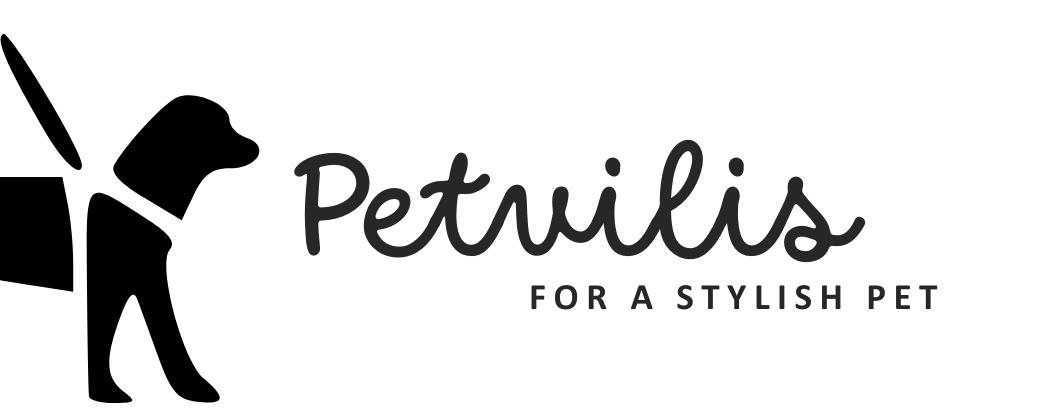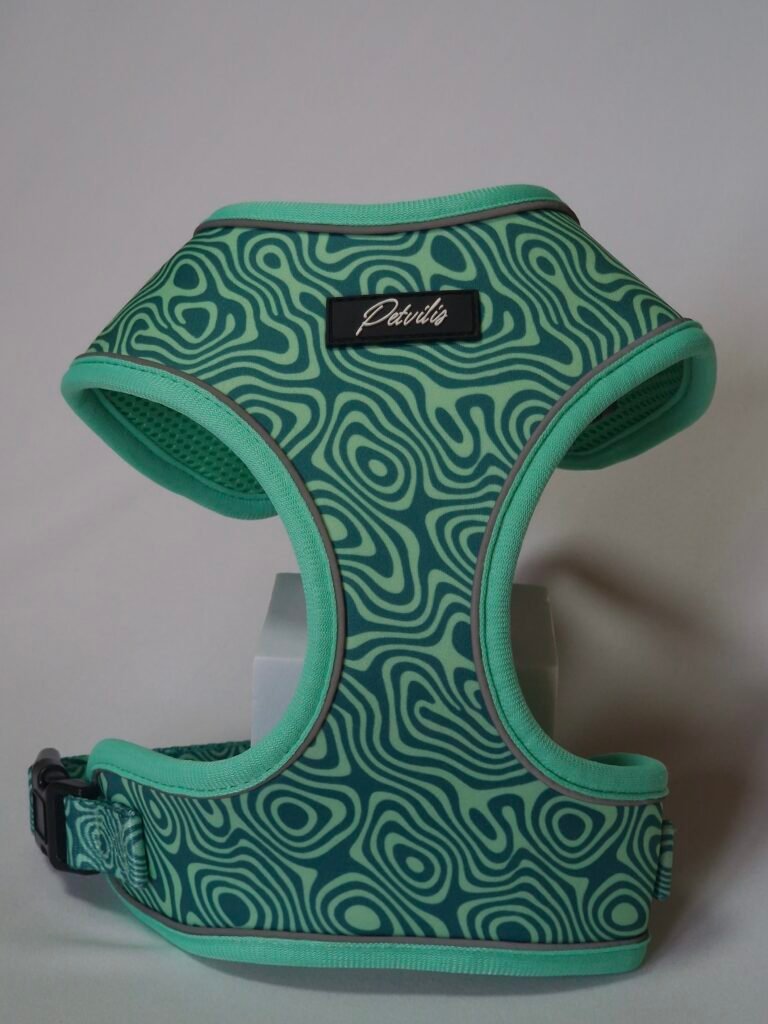Leash pulling? Here’s how harnesses help (and how to choose one).
In short: harnesses distribute load more evenly than a collar, give you more control, and are often more comfortable for everyday walks and training. Below—benefits, types, sizing guide, and practical tips.
Key benefits
- Less pressure on the neck. Pulling or sudden stops don’t strain the trachea; force is spread across the chest and shoulders.
- More control. Especially for active or young dogs—it’s easier to manage their body weight and redirect movement.
- Everyday comfort. Padded, ergonomically cut harnesses don’t restrict the shoulders and allow a natural stride.
- Safety. Dual attachment points (front and back), reflectives, and a grab handle help in critical situations.
- Suitable for many activities. City walks, hikes, running, training.
Note: a harness alone won’t fix pulling—it helps, but the best results come with consistent training.
Harnesses vs. collar (quick table)
| Criteria | Harnesses | Collar |
|---|---|---|
| Load distribution | Across chest/shoulders — even | Around neck — may compress the trachea |
| Control | High (especially with a front clip) | Medium |
| Pull reduction | Helps when combined with training | Usually doesn’t reduce |
| For sensitive neck/brachycephalic breeds | Yes | Not always |
| Sports/hiking | Very suitable | Limited |
| ID tag | Needs an additional collar | Yes, convenient |
Harness types: how to choose
- Y-shape (ergonomic). Doesn’t restrict shoulders; a common choice for daily use and hikes.
- H-shape. Minimal, light, highly adjustable.
- Step-in. Easy to put on for dogs that dislike going over the head.
- Front-clip (no-pull). Chest ring helps turn the dog to the side, reducing the pulling effect.
- Dual-clip. Front + back — flexibility for different situations.
- Vest type. Extra padding; good for small or short-haired dogs in cooler weather.
Materials: nylon/polyester (strong and light), leather (classic, needs care), neoprene or mesh (soft padding), metal D-rings, reliable buckles. Look for reflectives, breathable fabrics, buckle guards.
Sizing guide: measure accurately
- Chest girth — the widest point behind the front legs.
- Base of neck — if the model has a neck loop (some H/Y shapes).
- Back length — useful for vest types.
- Adjustment — aim for a two-finger gap under the strap (not too loose, not too tight).
Between sizes? Choose the larger one and adjust the straps. Check fit while standing and moving: the harness shouldn’t slide into the armpits or press on the shoulders.
How to put on and adjust correctly
- Loosen all straps, put the harness on, then adjust symmetrically.
- Pull down and sideways—check that nothing slips.
- Check friction points (under armpits, on the sternum). Use padding or pick another model if needed.
- Clip the leash to the back ring for daily walks; to the front for training when you need to reduce pulling.
Acclimation: helping your dog like the harness
- Positive association. Let the dog sniff it; reward with a treat.
- Short sessions at home. Put on for a few minutes; play.
- Slowly increase time. Add 5–10 minutes daily, then a short outdoor trip.
- No punishment. If the dog is anxious, step back a stage.
Common mistakes (and how to avoid them)
- Harness too loose. It slips and rubs—tighten or choose a smaller size.
- Wrong type. Heavy pullers—front clip; calm dogs—back clip.
- Chest strap too narrow. May restrict movement—choose a wider or ergonomic Y shape.
- “One-season” mindset. If you walk a lot, invest in stronger stitching, metal rings, reflectives.
Care and durability
- Wash by hand or on a gentle cycle (follow the label).
- Air dry, away from heat sources.
- Regularly check stitching, rings, and buckles; replace worn parts in time.
When will you still need a collar?
Even with a harness, an ID tag on a collar is a good idea. A collar is also handy for quick handling indoors or brief tie-offs when it’s safe to do so.
What to choose at “Petvilis”?
- Ergonomic Y-shape for daily walks and hikes.
- No-pull with front clip for training.
- Vest type for small dogs or sensitive coats.
- Reflectives and grab handle for extra safety.
Browse categories: [Harnesses], [Leashes], [Collars], [Size guide].
FAQ
Do harnesses suit all dogs?
Most — yes. If your dog has health issues (e.g., joints, skin), choose a soft, well-adjustable model and consult your vet if needed.
Do harnesses reduce pulling?
They can help, especially with a front clip, but real progress comes with consistent training and rewarding loose-leash walking.
How do I know the size is right?
You should fit two fingers under the strap; straps don’t slip and don’t press on the shoulders; the dog moves freely without chafing.
How many harnesses do I need?
Often one versatile harness is enough for daily use, but active dogs may benefit from a dedicated one for hikes/sports.
How do I care for it?
Wash per label, air dry, regularly check rings and stitching.



